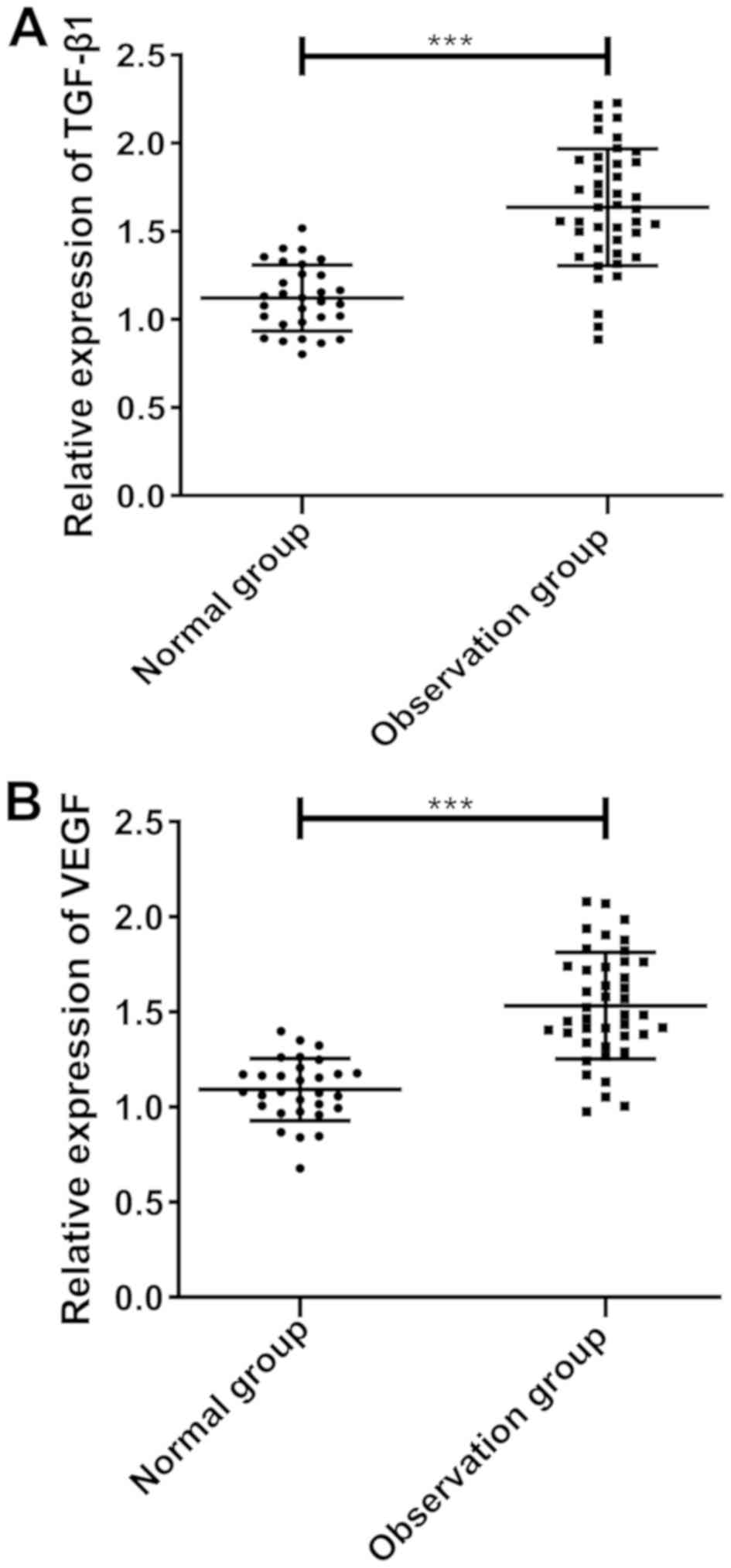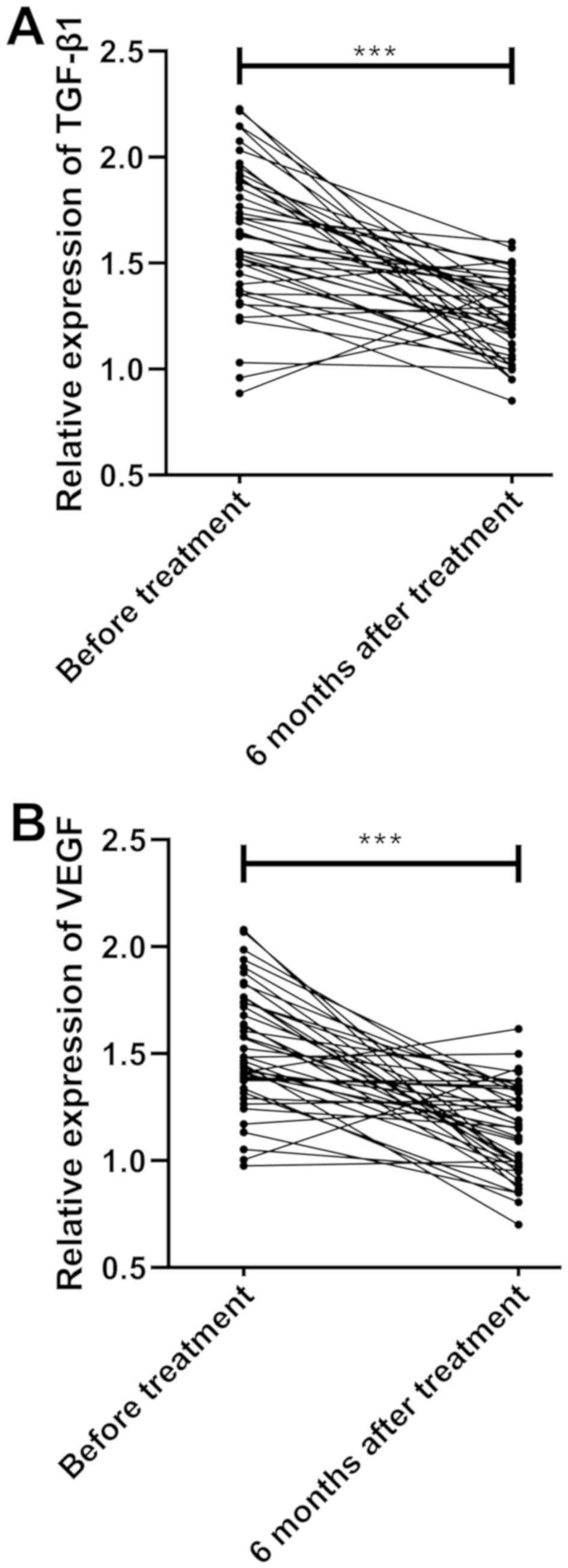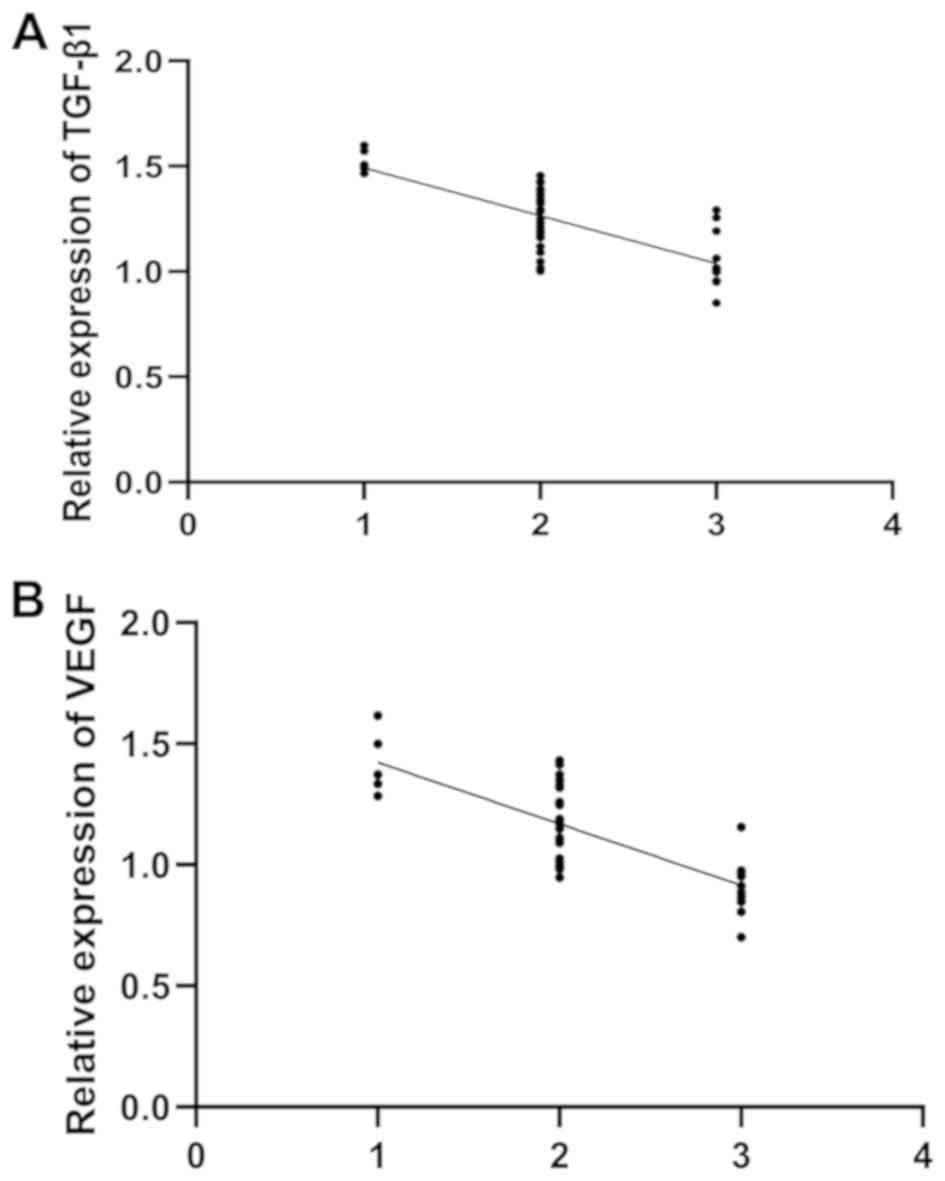|
1
|
Demirel M, Turhan E, Dereboy F and Yazar
T: Augmented repair of acute tendo Achilles ruptures with
gastrosoleus turn down flap. Indian J Orthop. 45:45–52. 2011.
View Article : Google Scholar : PubMed/NCBI
|
|
2
|
Frankewycz B, Krutsch W, Weber J,
Ernstberger A, Nerlich M and Pfeifer CG: Rehabilitation of Achilles
tendon ruptures: Is early functional rehabilitation daily routine?
Arch Orthop Trauma Surg. 137:333–340. 2017. View Article : Google Scholar : PubMed/NCBI
|
|
3
|
Aisaiding A, Wang J, Maimaiti R, Jialihasi
A, Aibek R, Qianman B, Shawutali N, Badelihan A, Bahetiya W, Kubai
A, et al: A novel minimally invasive surgery combined with early
exercise therapy promoting tendon regeneration in the treatment of
spontaneous Achilles tendon rupture. Injury. 49:712–719. 2018.
View Article : Google Scholar : PubMed/NCBI
|
|
4
|
Yang X, Meng H, Quan Q, Peng J, Lu S and
Wang A: Management of acute Achilles tendon ruptures: A review.
Bone Joint Res. 7:561–569. 2018. View Article : Google Scholar : PubMed/NCBI
|
|
5
|
Lantto I, Heikkinen J, Flinkkila T,
Ohtonen P, Siira P, Laine V and Leppilahti J: A prospective
randomized trial comparing surgical and nonsurgical treatments of
acute Achilles tendon ruptures. Am J Sports Med. 44:2406–2414.
2016. View Article : Google Scholar : PubMed/NCBI
|
|
6
|
Weatherall JM, Mroczek K and Tejwani N:
Acute achilles tendon ruptures. Orthopedics. 33:758–764. 2010.
View Article : Google Scholar : PubMed/NCBI
|
|
7
|
Alcelik I, Diana G, Craig A, Loster N and
Budgen A: Minimally invasive versus open surgery for acute Achilles
tendon ruptures a systematic review and meta-analysis. Acta Orthop
Belg. 83:387–395. 2017.PubMed/NCBI
|
|
8
|
Macaulay A, Nandyala SV, Miller CP,
Ghorbanhoseini M, Walley KC and Kwon JY: Potential for Bias and the
American Orthopaedic Foot and Ankle Society Ankle-Hindfoot Scoring
System. Foot Ankle Spec. 11:416–419. 2018. View Article : Google Scholar : PubMed/NCBI
|
|
9
|
Hinz B: The extracellular matrix and
transforming growth factor-β1: Tale of a strained relationship.
Matrix Biol. 47:54–65. 2015. View Article : Google Scholar : PubMed/NCBI
|
|
10
|
Hou Y, Mao Z, Wei X, Lin L, Chen L, Wang
H, Fu X, Zhang J and Yu C: The roles of TGF-beta1 gene transfer on
collagen formation during Achilles tendon healing. Biochem Biophys
Res Commun. 383:235–239. 2009. View Article : Google Scholar : PubMed/NCBI
|
|
11
|
Filardo G, Presti ML, Kon E and Marcacci
M: Nonoperative biological treatment approach for partial Achilles
tendon lesion. Orthopedics. 33:120–123. 2010. View Article : Google Scholar : PubMed/NCBI
|
|
12
|
Ferrara N and Adamis AP: Ten years of
anti-vascular endothelial growth factor therapy. Nat Rev Drug
Discov. 15:385–403. 2016. View Article : Google Scholar : PubMed/NCBI
|
|
13
|
Pedowitz D and Kirwan G: Achilles tendon
ruptures. Curr Rev Musculoskelet Med. 6:285–293. 2013. View Article : Google Scholar : PubMed/NCBI
|
|
14
|
Ismail M, Karim A, Shulman R, Amis A and
Calder J: The Achillon achilles tendon repair: Is it strong enough?
Foot Ankle Int. 29:808–813. 2008. View Article : Google Scholar : PubMed/NCBI
|
|
15
|
Livak KJ and Schmittgen TD: Analysis of
relative gene expression data using real-time quantitative PCR and
the 2(-Delta Delta C(T)) Method. Methods. 25:402–408. 2001.
View Article : Google Scholar : PubMed/NCBI
|
|
16
|
Sayyed-Hosseinian SH, Hassankhani GG,
Bagheri F, Alavi N, Shojaie B and Mousavian A: Validation of the
persian version of the American Orthopedic Foot and Ankle Society
Score (AOFAS) questionnaire. Arch Bone Jt Surg. 6:233–239.
2018.PubMed/NCBI
|
|
17
|
Ganestam A, Kallemose T, Troelsen A and
Barfod KW: Increasing incidence of acute Achilles tendon rupture
and a noticeable decline in surgical treatment from 1994 to 2013. A
nationwide registry study of 33,160 patients. Knee Surg Sports
Traumatol Arthrosc. 24:3730–3737. 2016. View Article : Google Scholar : PubMed/NCBI
|
|
18
|
Mai HT, Alvarez AP, Freshman RD, Chun DS,
Minhas SV, Patel AA, Nuber GW and Hsu WK: The NFL Orthopaedic
Surgery Outcomes Database (NO-SOD): The Effect of common
orthopaedic procedures on football careers. Am J Sports Med.
44:2255–2262. 2016. View Article : Google Scholar : PubMed/NCBI
|
|
19
|
Huang J, Wang C, Ma X, Wang X, Zhang C and
Chen L: Rehabilitation regimen after surgical treatment of acute
Achilles tendon ruptures: A systematic review with meta-analysis.
Am J Sports Med. 43:1008–1016. 2015. View Article : Google Scholar : PubMed/NCBI
|
|
20
|
Deng S, Sun Z, Zhang C, Chen G and Li J:
Surgical treatment versus conservative management for acute
Achilles tendon rupture: A systematic review and meta-analysis of
randomized controlled trials. J Foot Ankle Surg. 56:1236–1243.
2017. View Article : Google Scholar : PubMed/NCBI
|
|
21
|
Maffulli G, Buono AD, Richards P, Oliva F
and Maffulli N: Conservative, minimally invasive and open surgical
repair for management of acute ruptures of the Achilles tendon: A
clinical and functional retrospective study. Muscles Ligaments
Tendons J. 7:46–52. 2017. View Article : Google Scholar : PubMed/NCBI
|
|
22
|
Gulati V, Jaggard M, Al-Nammari SS,
Uzoigwe C, Gulati P, Ismail N, Gibbons C and Gupte C: Management of
achilles tendon injury: A current concepts systematic review. World
J Orthop. 6:380–386. 2015. View Article : Google Scholar : PubMed/NCBI
|
|
23
|
Walden G, Liao X, Donell S, Raxworthy MJ,
Riley GP and Saeed A: A clinical, biological, and biomaterials
perspective into tendon injuries and regeneration. Tissue Eng Part
B Rev. 23:44–58. 2017. View Article : Google Scholar : PubMed/NCBI
|
|
24
|
Mait JE, Hayes WT, Blum CL, Pivec R, Zaino
CJ, Jauregui JJ, Saha S, Uribe JA and Urban WP: A biomechanical
comparison of different tendon repair techniques. J Long Term Eff
Med Implants. 26:167–171. 2016. View Article : Google Scholar : PubMed/NCBI
|
|
25
|
Carmont MR: Achilles tendon rupture: The
evaluation and outcome of percutaneous and minimally invasive
repair. Br J Sports Med. 52:1281–1282. 2018. View Article : Google Scholar : PubMed/NCBI
|
|
26
|
Braunstein M, Baumbach SF, Boecker W,
Carmont MR and Polzer H: Development of an accelerated functional
rehabilitation protocol following minimal invasive Achilles tendon
repair. Knee Surg Sports Traumatol Arthrosc. 26:846–853. 2018.
View Article : Google Scholar : PubMed/NCBI
|
|
27
|
Kakiuchi M: A combined open and
percutaneous technique for repair of tendo Achillis. Comparison
with open repair. J Bone Joint Surg Br. 77:60–63. 1995. View Article : Google Scholar : PubMed/NCBI
|
|
28
|
Inoue M, Nakajima M, Oi Y, Hojo T, Itoi M
and Kitakoji H: The effect of electroacupuncture on tendon repair
in a rat Achilles tendon rupture model. Acupunct Med. 33:58–64.
2015. View Article : Google Scholar : PubMed/NCBI
|
|
29
|
Tempfer H, Kaser-Eichberger A, Lehner C,
Gehwolf R, Korntner S, Kunkel N, Wagner A, Gruetz M, Heindl LM,
Schroedl F, et al: Bevacizumab improves Achilles tendon repair in a
rat model. Cell Physiol Biochem. 46:1148–1158. 2018. View Article : Google Scholar : PubMed/NCBI
|
|
30
|
Yuksel S, Guleç MA, Gultekin MZ, Adanır O,
Caglar A, Beytemur O, Onur Küçükyıldırım B, Avcı A, Subaşı C, İnci
Ç, et al: Comparison of the early period effects of bone
marrow-derived mesenchymal stem cells and platelet-rich plasma on
the Achilles tendon ruptures in rats. Connect Tissue Res.
57:360–373. 2016. View Article : Google Scholar : PubMed/NCBI
|
|
31
|
Lyras DN, Kazakos K, Verettas D,
Polychronidis A, Tryfonidis M, Botaitis S, Agrogiannis G,
Simopoulos C, Kokka A and Patsouris E: The influence of
platelet-rich plasma on angiogenesis during the early phase of
tendon healing. Foot Ankle Int. 30:1101–1106. 2009. View Article : Google Scholar : PubMed/NCBI
|
|
32
|
Zhang F, Liu H, Stile F, Lei MP, Pang Y,
Oswald TM, Beck J, Dorsett-Martin W and Lineaweaver WC: Effect of
vascular endothelial growth factor on rat Achilles tendon healing.
Plast Reconstr Surg. 112:1613–1619. 2003. View Article : Google Scholar : PubMed/NCBI
|


















